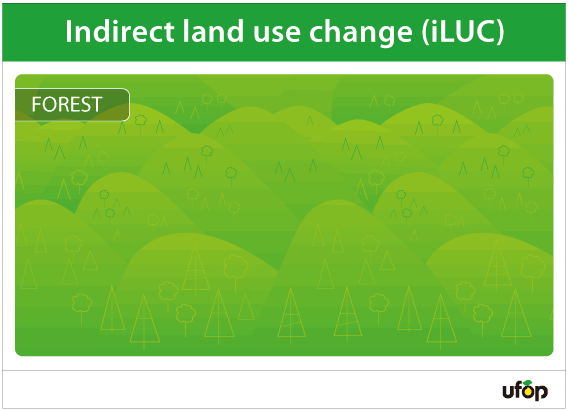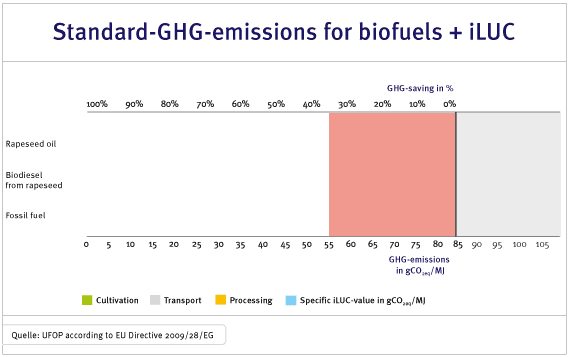What does the iLUC hypothesis say?
iLUC means Indirect Land Use Change.
The so-called iLUC hypothesis says that the European biofuel policy leads to the renewable raw materials acreage being extended in Europe and in third-party states and thus triggers global displacement effects in land use. As a consequence, to re-establish market equilibrium for the demand for raw materials in the food and feedstuff market, among other things land use changes will be undertaken overseas, for example by clearing rain forests.

Directive 2009/28/EC obligates the EU Commission to present a report to the EU Parliament and the council, "in which it examines the effects of indirect land use changes on greenhouse gas emissions and, if applicable, suggests options for reducing these effects." In its December 2010 report the EU Commission presents various options for incorporating iLUC into the sustainability criteria for biofuels and liquid bioenergy sources.
These include the introduction of an iLUC factor, an additional "CO2 penalty" on biofuels that are used in the EU to achieve the previously described objective. In the political and technical discussion the question is asked, in particular, of how high the penalty value should be set. In the end more greenhouse gas emissions are generated over an extended period by soil degradation, when, for example, virgin forest grown on peat bog surfaces is cleared and oil palms are cultivated. In the IFPRI study's model these emissions are attributed to biodiesel from rapeseed.
On behalf of the EU Commission the International Food Policy Research Institute (IFPRI) in December 2011 presented a revised report on the effects of European biofuel production on land use changes and the associated greenhouse gas emissions. Based on the results of the IFPRI model, the European Joint Research Centre (JRC) research institute of the EU Commission has calculated a global LUC emission value and eight raw material-specific iLUC emission values.

When the iLUC factor is taken into account, the greenhouse gas emissions of biodiesel based on rapeseed or soya could even exceed the emissions calculated for fossil diesel fuel. The GHG reduction requirement of at least 50% from 2018 could no longer be fulfilled. A specific iLUC factor of 55 g of CO2 per megajoule for oils plants would mean the end for biodiesel, plant oil-based HVOs and also for the not yet approved co-refining of plant oils in oil refineries.
Consequences for agriculture and biofuel production in the EU
The consequences of the introduction of an iLUC factor would be dramatic for the industry concerned and for agriculture. The most important market would be closed off for oilseeds like rapeseed or sunflower seed. The import of protein feedstuffs, primarily soya, would have to increase accordingly.
Here, too, UFOP's criticism applies to the IFPRI study:
- The protein feedstuff components and their market significance in European oilseed production are inadequately assessed in the IFPRI study. In short rapeseed meal replaces soy meal and thus the acreage that corresponds to this. Germany alone imports 3 million tonnes of soy meal each year! This substitution effect is not taken into account. As a result the greenhouse gas balance sheet is calculated to the disadvantage of local oilseeds.
- In addition many agricultural aspects of rapeseed are not taken into account: Rapeseed is also an important leaf crop and breaks up crop rotations for cereals (including maize). With currently around 1.4 million hectares of rapeseed acreage in Germany, in many agricultural regions there are no alternatives for sustainable agriculture. Rapeseed interrupts disease cycles caused by crop rotation in cereal production, reduces soil erosion, improves soil structure and improves water retention capacity.
- Rapeseed is indispensable to the agricultural industry. In spring it is the most important pollination plant for bees and ensures the rapid development and multiplication of colonies.


 Union zur Förderung von Oel- und Proteinpflanzen E.V.
Union zur Förderung von Oel- und Proteinpflanzen E.V.


